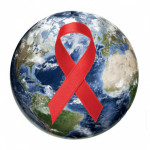Levels of transmitted antiretroviral (ARV) resistance are high among the HIV population in Washington, DC, but have fallen in recent years. Publishing their findings in Clinical Infectious Diseases, researchers conducted a retrospective study in which they analyzed the genetics of virus in 710 HIV-positive individuals enrolled in studies in the nation’s capital between 1994 and 2013.
Among the 566 treatment-naive individuals, overall transmitted drug resistance (TDR) was 22.5 percent. A total of 15.8 percent had resistance to nucleoside/nucleotide reverse transcriptase inhibitors (NRTIs), 9.8 percent had resistance to non-nucleoside reverse transcriptase inhibitors (NNRTIs) and 4.2 percent had protease inhibitor (PI) resistance.
Looking at rates of those with TDR to a single class of ARVs, a respective 10 percent, 5.1 percent and 1.6 percent of the total cohort had resistance to NRTIs, NNRTIs and PIs. As for those with dual-class TDR, 1.6 percent of the total cohort had resistance to PIs and NRTIs and 3.4 percent had resistance to NRTIs and NNRTIs. A total of 0.9 percent of the cohort was resistant to NRTIs, NNRTIs and PIs.
The frequency of TDR fell from 27.1 percent during 1994 to 2006 to 19.4 percent during 2007 to 2013.
To read the study abstract, click here.







Comments
Comments